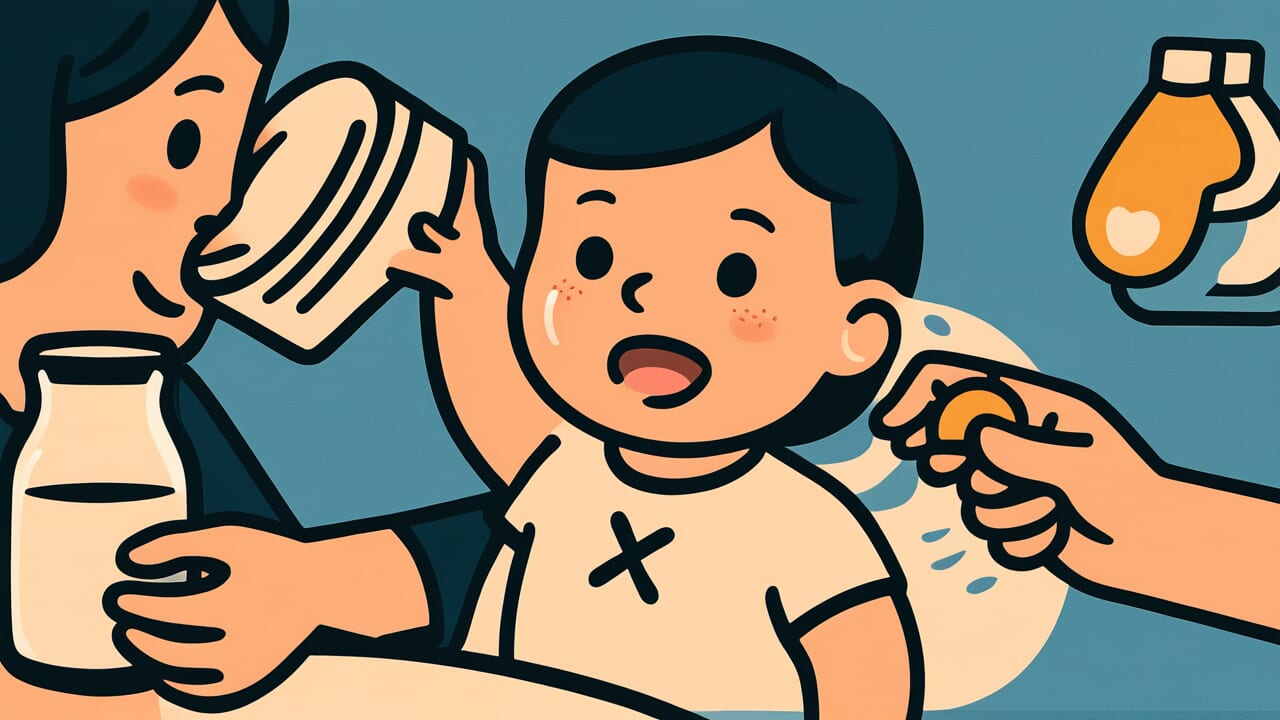How to Read “Give milk to the crying child”
Naku ko ni chichi
Meaning of “Give milk to the crying child”
“Give milk to the crying child” is a proverb that means it’s natural to give people what they truly need.
Just as a mother gives breast milk to a hungry, crying baby, this saying teaches the importance of providing what someone really needs when they’re in trouble or asking for help.
People use this proverb when they want to express that support and help should be given at the right time in the right way.
It represents natural mutual assistance that responds to someone’s true needs, not pushy kindness.
In modern times, businesses use this phrase to mean “providing services that customers truly want.”
In education, teachers use it to describe “giving appropriate support when students are struggling.”
The key is to observe someone’s situation carefully and understand what they really need.
Origin and Etymology
No clear written records explain the origin of this proverb.
However, based on its structure, it likely captures traditional Japanese wisdom about raising children.
The phrase “Give milk to the crying child” describes an extremely natural act: a mother nursing her baby when it cries.
Babies cannot speak, so they communicate hunger and discomfort through crying.
The mother responds to those cries by giving milk. This is the most basic form of parent-child communication that has continued since humanity began.
This expression likely emerged from child-rearing views in Japanese society before the Edo period.
People back then valued following nature’s principles. They believed babies cry because they need to, and responding to that is only natural.
This proverb has been passed down through generations because it goes beyond just childcare.
It shows a broader principle of human relationships: “give what’s needed to those who need it.”
The spirit of natural mutual help is packed into these few words. Help those in trouble. Respond to those who ask. This is what the saying teaches.
Usage Examples
- Seeing a new employee struggling, I immediately gave them the necessary documents, like “Give milk to the crying child”
- Disaster relief should follow the spirit of “Give milk to the crying child” by sending what the affected areas truly need
Universal Wisdom
The proverb “Give milk to the crying child” reveals a fundamental principle of human society.
It shows the truth that helping each other is, at its core, an extremely natural act.
A baby cries and the mother gives milk. There’s no hesitation in this act. No calculation. She simply gives because it’s needed. That’s all.
Yet we tend to complicate this natural act. We wonder: “Will I get something in return?” “Is this really necessary?” “Will they think I’m interfering?”
This proverb has been passed down for hundreds of years because it captures a universal struggle.
It shows the tension between our instinctive desire to help and the hesitation that social life creates.
Our ancestors understood something important. The most beautiful form of helping is responding naturally to someone’s needs.
There’s no calculation or showing off. You simply reach out because someone in front of you is struggling.
That purity is the essence of human relationships.
Even as times change and society grows complex, this truth remains unchanged.
Give what’s needed to those who need it. This is the most basic act of being human.
When AI Hears This
When you view a baby’s crying as an information transmission system, you see surprisingly sophisticated design.
The mother cannot directly know the baby’s hunger level. This creates information asymmetry. What’s crucial here is that babies cannot lie.
Crying is actually a high-cost activity. It burns energy and risks attracting predators.
Research by biologists shows that babies who cry intensely experience rising body temperature and increased stress hormones.
If a baby cries when not truly hungry, it wastes precious energy. This high cost makes crying a reliable signal.
This is a perfect example of what game theory calls a “costly honest signal.”
If crying had no cost, babies would cry constantly to demand milk. Then mothers would stop trusting the cries, and the system would collapse.
Because crying has sufficient cost, babies only cry when truly necessary. Mothers can respond with confidence.
What’s even more interesting is that this system is optimal for both parties.
The baby reliably gets nutrition when needed, and the mother avoids unnecessary nursing.
Here we have a perfect information transmission protocol that evolution has refined over millions of years.
Lessons for Today
This proverb teaches modern people that true compassion means thinking from the other person’s perspective.
In modern society, even well-intentioned actions can become burdens if they’re not what the other person truly needs.
You’ve probably heard news stories about disaster relief being overwhelmed by unwanted supplies.
Advice given with good intentions becomes pushy if the other person didn’t ask for it.
What matters is first listening to the other person’s voice. What do they need? What kind of help are they seeking?
Understand this, then act. By following this order, your good intentions truly become helpful.
The same applies at work, at home, and in friendships.
Develop the habit of thinking, “What does this person need right now?”
Sometimes they need empathy more than advice. Sometimes they need you to watch over them rather than help directly.
Like giving milk to a crying child, become someone who can naturally provide what others truly need at the right time.
That is the warm wisdom this proverb offers to those of us living in modern times.



Comments